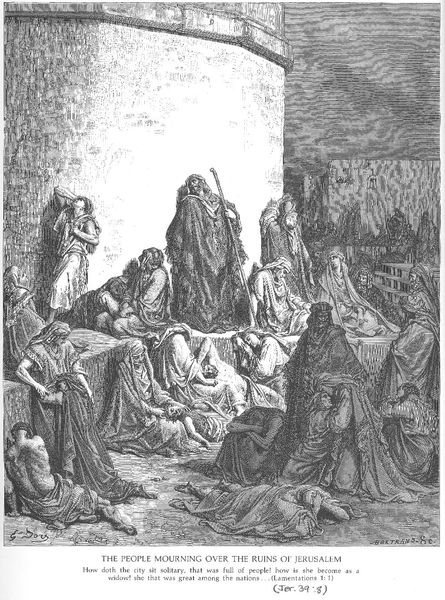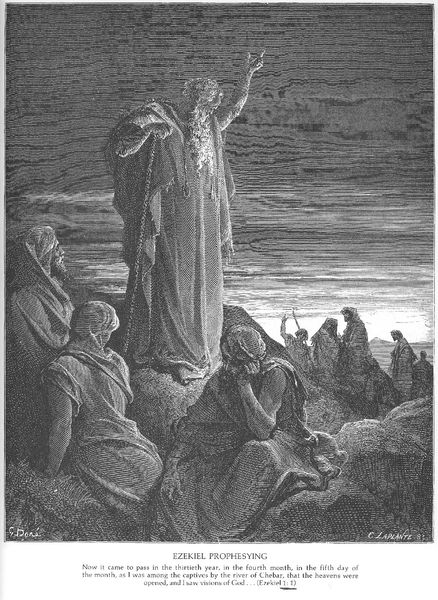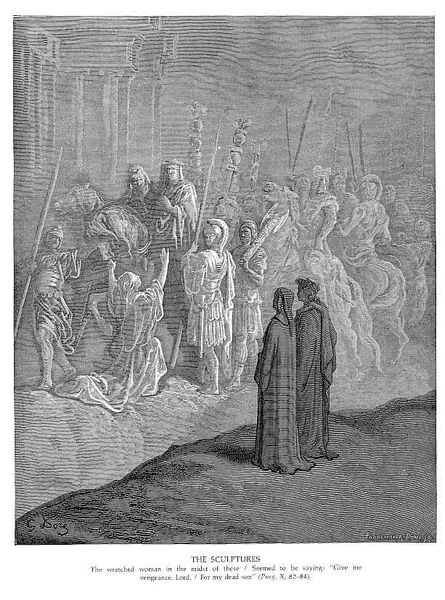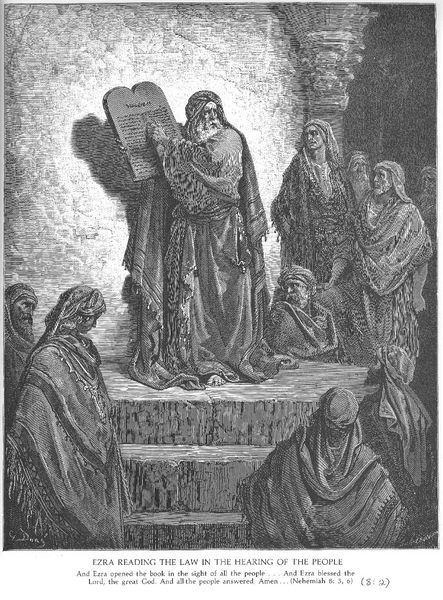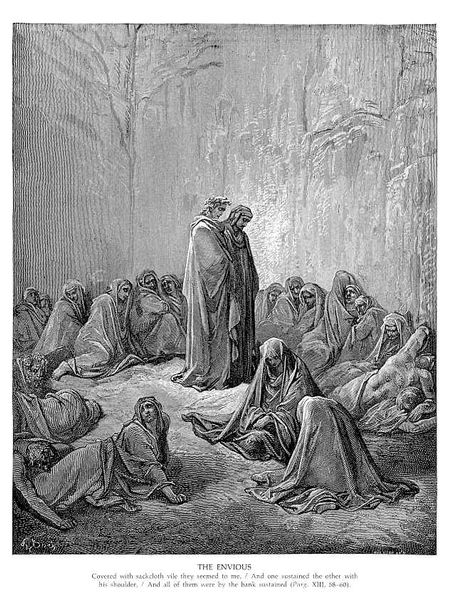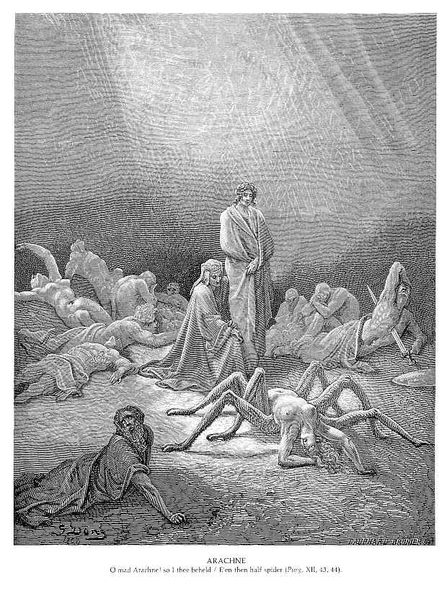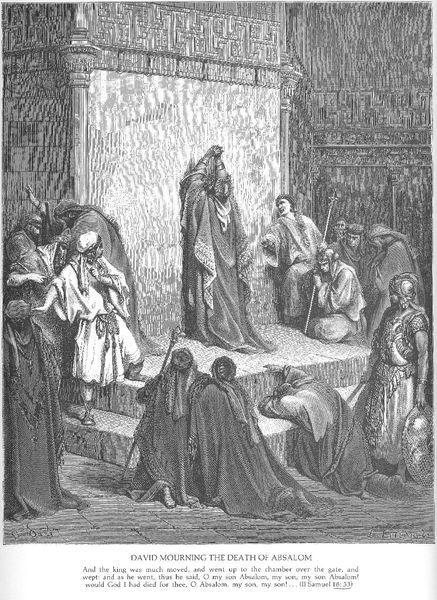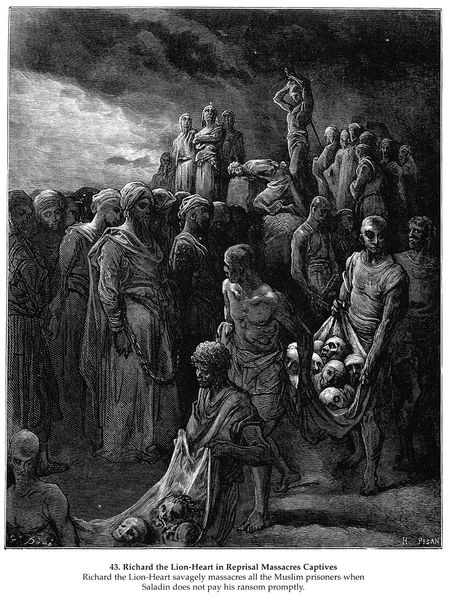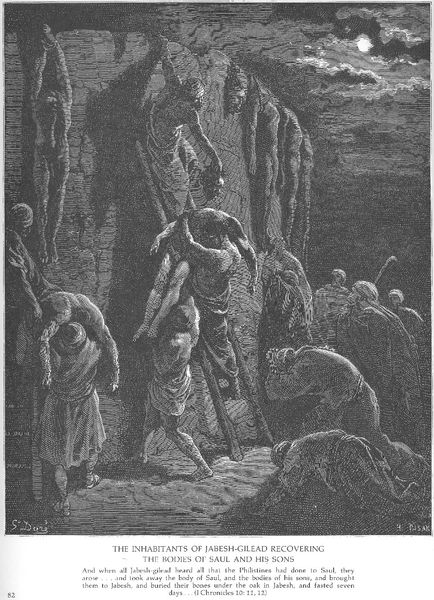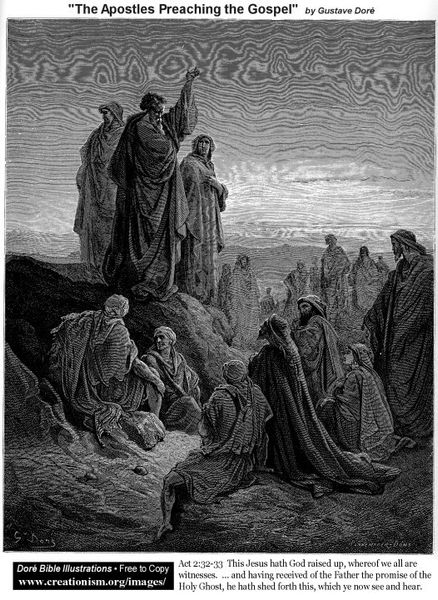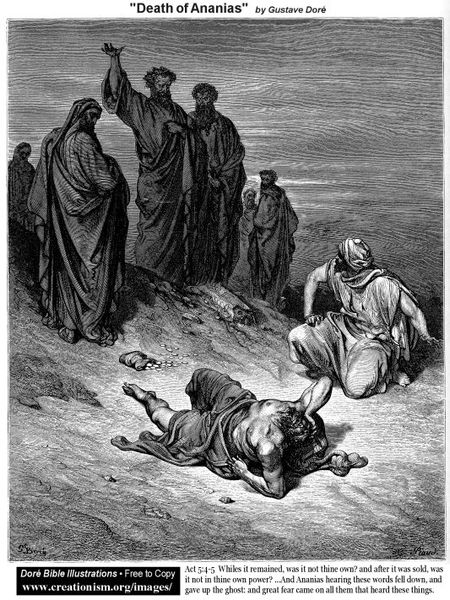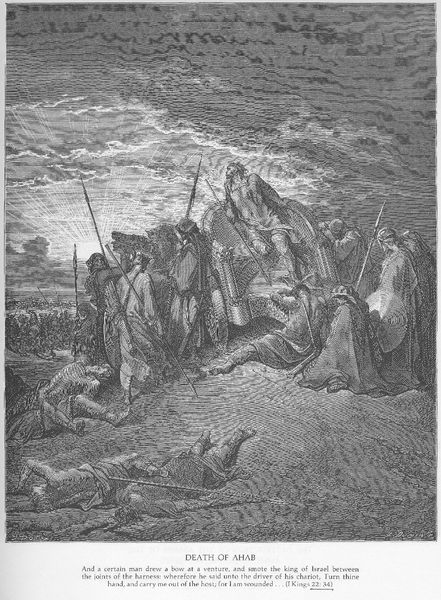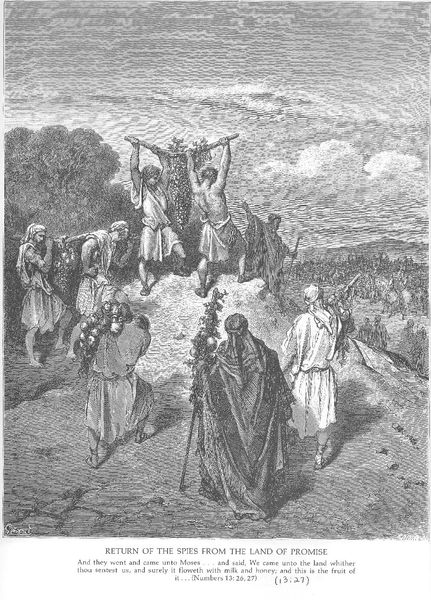
print, photography, engraving
#
narrative-art
# print
#
old engraving style
#
charcoal drawing
#
photography
#
christianity
#
history-painting
#
engraving
Copyright: Public domain
Editor: This is Gustave Doré's engraving, "The Plague of Jerusalem." The scene is filled with figures suffering amidst the chaos. What strikes me is how Doré uses light and shadow to amplify the emotional intensity. What do you see in this piece? Curator: The engraving, steeped in visual references and emotional depth, indeed evokes a cultural memory of divine retribution and human suffering. Note the towering figure with outstretched arms – what emotional connotations does that symbol trigger? Editor: Perhaps pleading, or maybe a desperate call for salvation? Curator: Precisely. Doré masterfully utilizes body language to convey intense emotions and the psychological weight of the scene. The angel's posture is a loaded symbol. And observe the altar; do you think its purpose in the story speaks only to the past? Editor: Not really. Altars and sacrifice always speak to deeper commitments that still have relevance today. They symbolize decisions that affect us collectively. Curator: Indeed! So this work functions on many symbolic levels. The plague itself could stand for so many societal ills, both past and present. It’s a potent reminder of how imagery continues to echo through history, informed by our collective cultural understanding. We carry memory with us, even when we think the images are long gone. Editor: I see. It’s more than just an illustration of a biblical event, it’s a reflection on the human condition, suffering, and perhaps the possibility of redemption. Thanks for unpacking this with me. Curator: It’s been a pleasure to share how historical trauma and our inherited cultural images intertwine and echo across time.
Comments
No comments
Be the first to comment and join the conversation on the ultimate creative platform.
